Abstract
The association between the percent change in first-year and total underrepresented minority student enrollment and the presence of preadmission programs at Liaison Committee on Medical Education (LCME) accredited medical schools was assessed before and during successful legal and legislative challenges to affirmative action. The percent change in under-represented minority student enrollment was determined by comparing enrollment data for the academic years 1993-94 and 1996-97. Schools were categorized as having either a negative or positive percent change in their enrollment of underrepresented minority students. Logistic regression was used to determine the association of the percent change in under-represented minority student enrollment and the presence of a preadmission program while controlling for schools' financial support and the presence of postbaccalaureate programs. Fifty-six percent of the included medical schools had preadmission programs. Schools with a positive percent change were significantly more likely to have preadmission programs compared with schools with a negative percent change. There was no association between the presence of preadmission programs and the percent change in total enrollment. These results indicate that the presence of preadmission programs is positively associated with increases in first-year underrepresented minority student enrollment during the successful challenges to affirmative actions.
Full text
PDF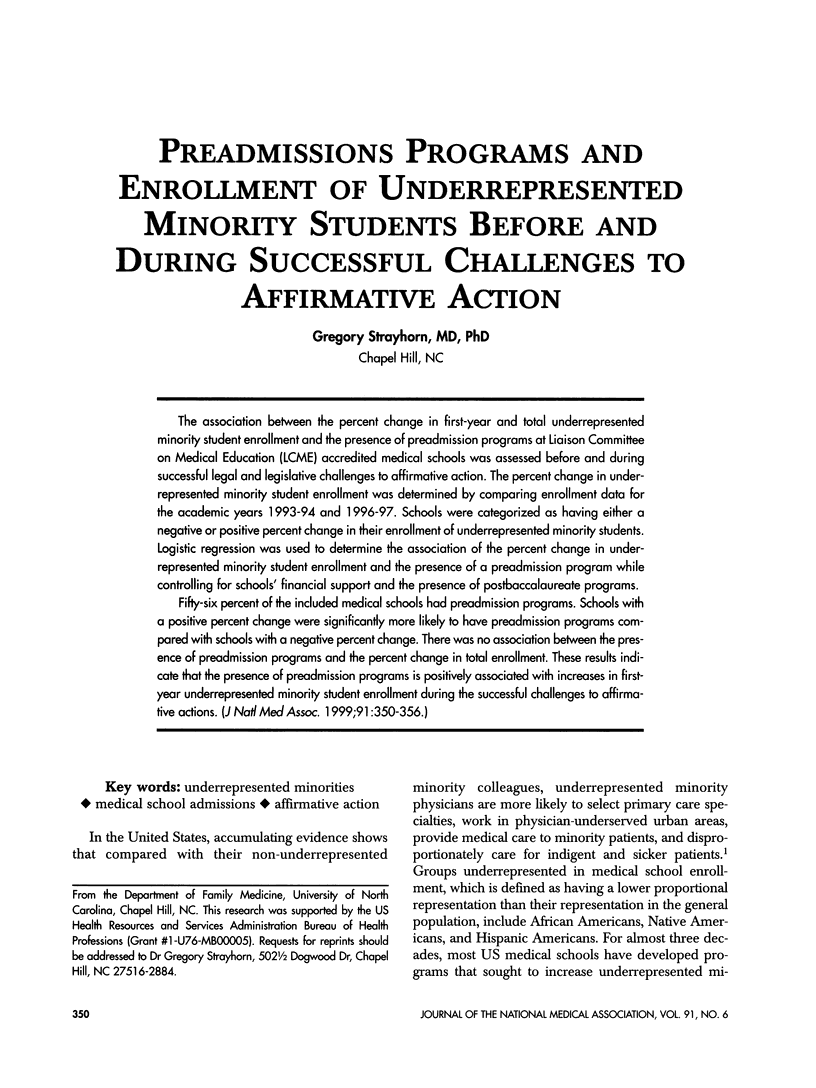
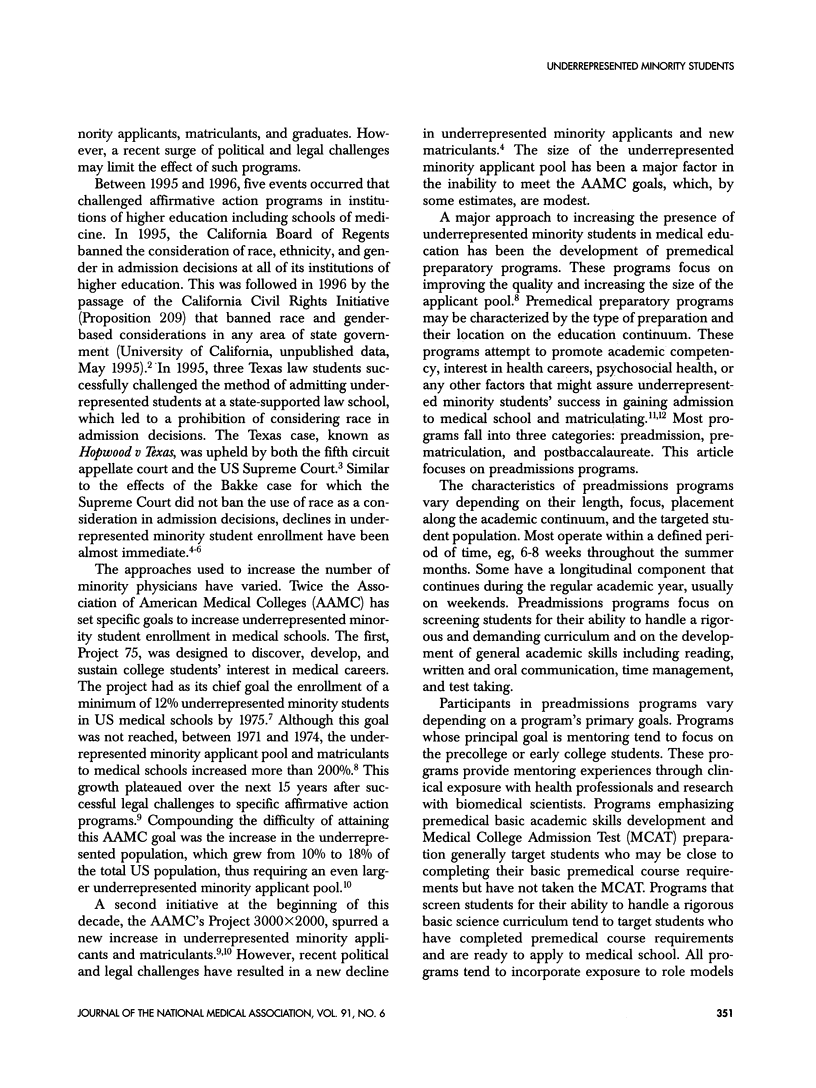
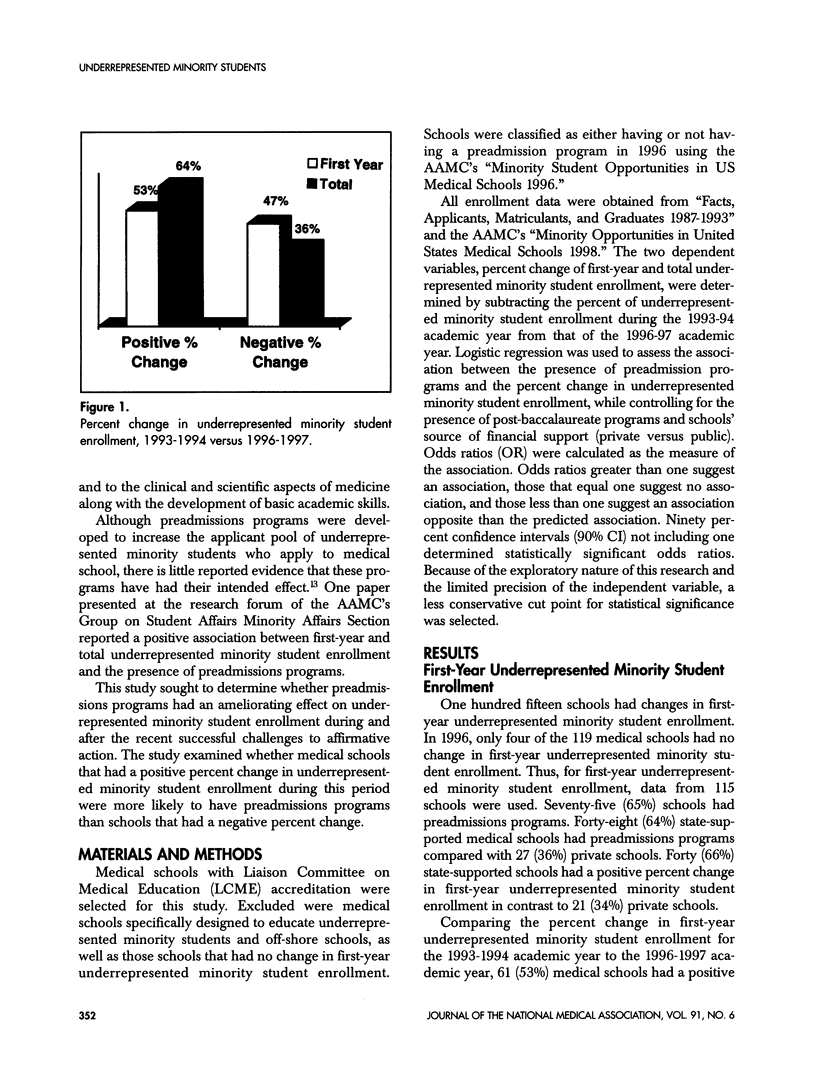
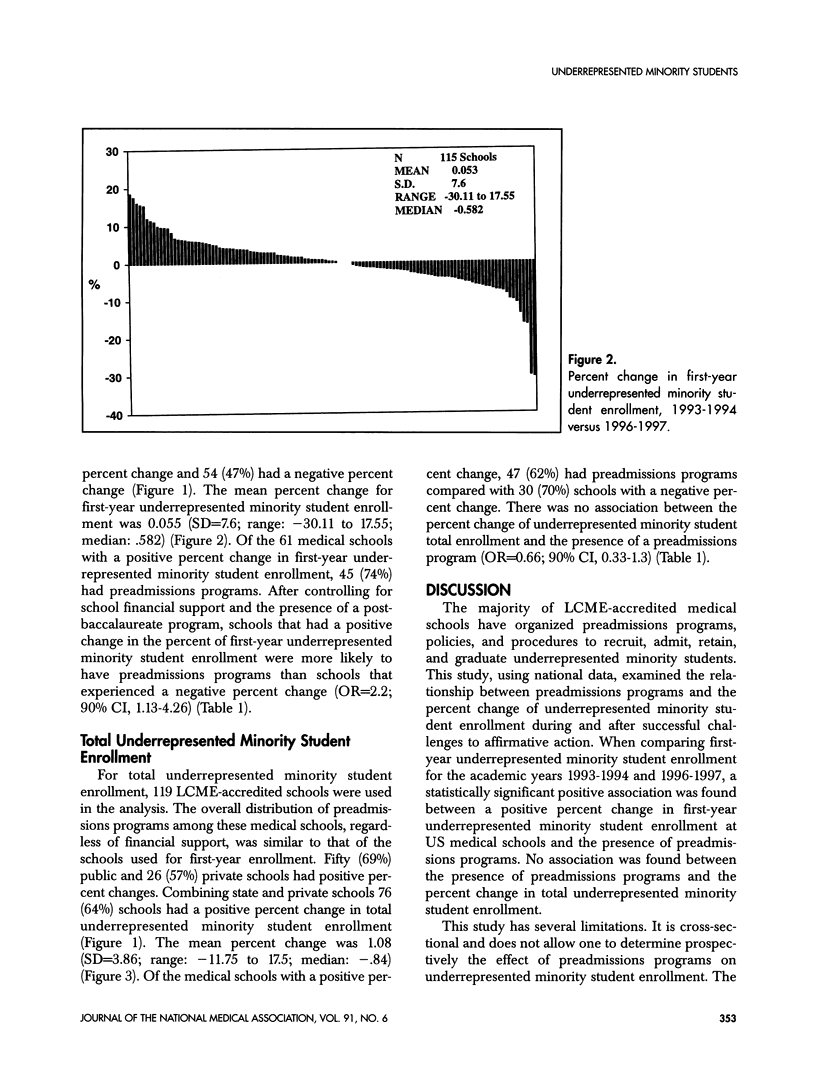
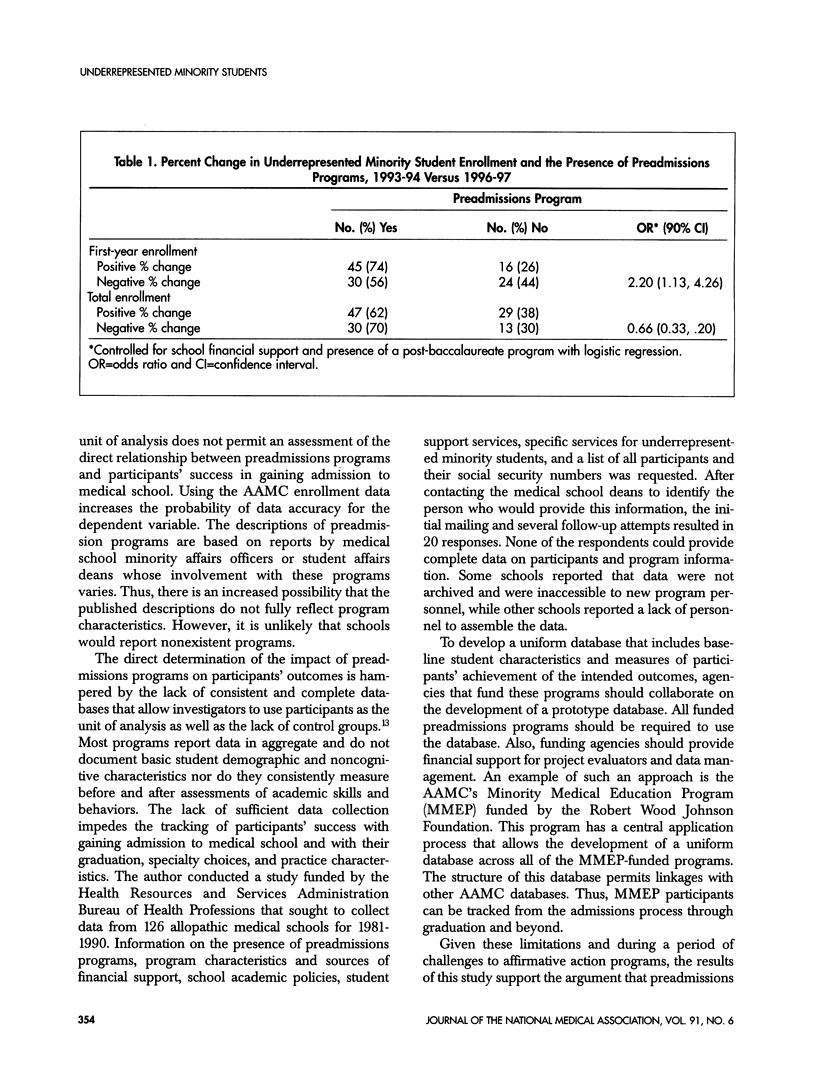
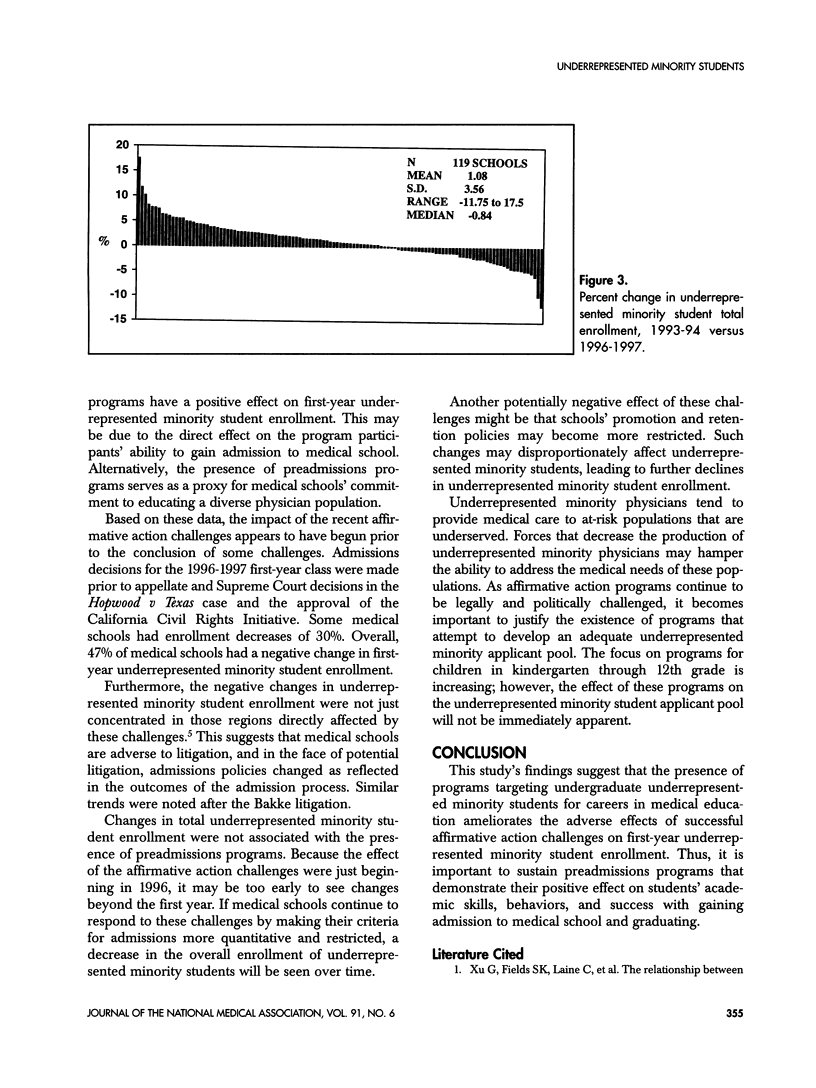
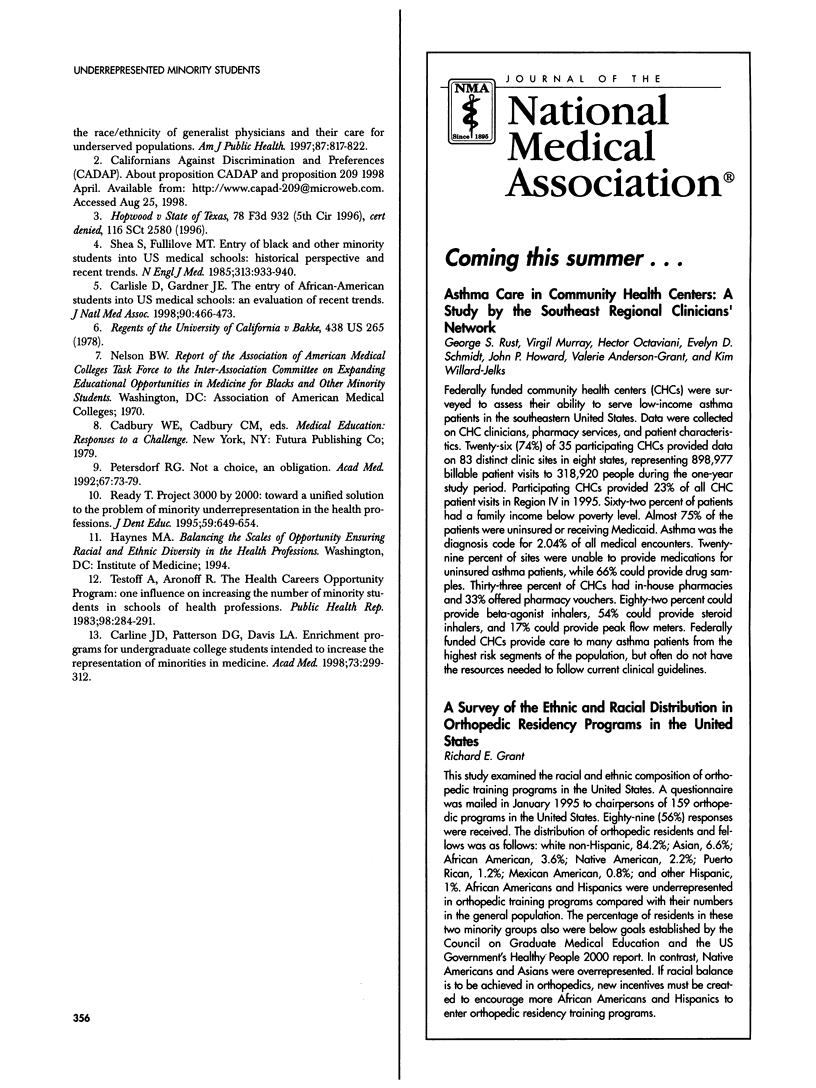
Selected References
These references are in PubMed. This may not be the complete list of references from this article.
- Carline J. D., Patterson D. G., Davis L. A., Oakes-Borremo P. Enrichment programs for undergraduate college students intended to increase the representation of minorities in medicine. Acad Med. 1998 Mar;73(3):299–312. doi: 10.1097/00001888-199803000-00019. [DOI] [PubMed] [Google Scholar]
- Carlisle D. M., Gardner J. E. The entry of African-American students into US medical schools: an evaluation of recent trends. J Natl Med Assoc. 1998 Aug;90(8):466–473. [PMC free article] [PubMed] [Google Scholar]
- Petersdorf R. G. Not a choice, an obligation. Acad Med. 1992 Feb;67(2):73–79. doi: 10.1097/00001888-199202000-00003. [DOI] [PubMed] [Google Scholar]
- Ready T. Project 3000 by 2000: toward a unified solution to the problem of minority underrepresentation in the health professions. J Dent Educ. 1995 Jun;59(6):649–654. [PubMed] [Google Scholar]
- Shea S., Fullilove M. T. Entry of black and other minority students into U.S. medical schools. Historical perspective and recent trends. N Engl J Med. 1985 Oct 10;313(15):933–940. doi: 10.1056/NEJM198510103131506. [DOI] [PubMed] [Google Scholar]
- Testoff A., Aronoff R. The Health Careers Opportunity Program: one influence on increasing the number of minority students in schools of health professions. Public Health Rep. 1983 May-Jun;98(3):284–291. [PMC free article] [PubMed] [Google Scholar]
- Xu G., Fields S. K., Laine C., Veloski J. J., Barzansky B., Martini C. J. The relationship between the race/ethnicity of generalist physicians and their care for underserved populations. Am J Public Health. 1997 May;87(5):817–822. doi: 10.2105/ajph.87.5.817. [DOI] [PMC free article] [PubMed] [Google Scholar]


